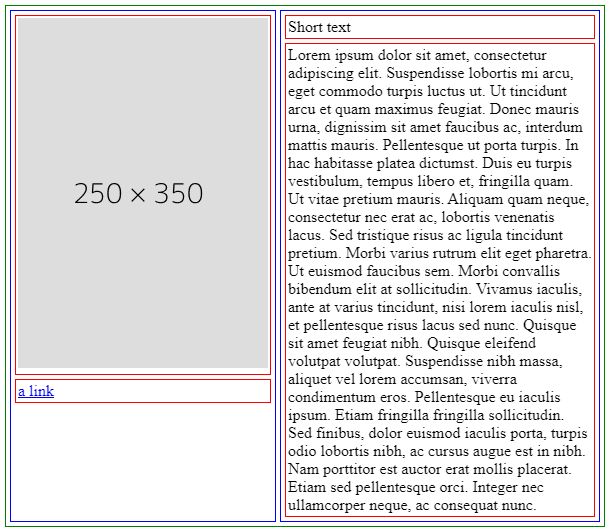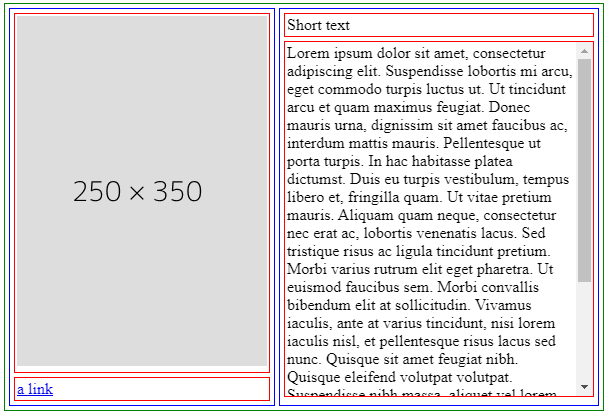Here is the code that I wrote to achieve the result. I tried to apply solution found here, but either my problem is different, or I’m missing the point.
<div class="container">
<div class="grid">
<div class="left_flex">
<div class="img"><img src="https://dummyimage.com/250x350/ddd/000000.png" /></div>
<div class="a_link"><a href="#" target="_blank">a link</a></div>
</div>
<div class="right_flex">
<div class="short_text">Short text</div>
<div class="long_text">
Lorem ipsum (...)
</div>
</div>
</div>
</div>
.container {
width: 600px;
}
.grid {
display: flex;
flex-flow: row nowrap;
align-content: stretch;
overflow: auto;
}
.left_flex,
.right_flex {
flex-flow: column nowrap;
display: flex;
align-content: stretch;
}
.right_flex {
overflow: auto;
}
.long_text {
min-height: min-content;
}
.img img {
max-width: 250px;
}
I omitted the code used for styling and elongating the paragraph. Full code can be found in the pen.
My goal is to have a form for users to fill in. The img div is a place for a picture, that can vary in size and aspect ratio, but will not exceed 250px, and the right side of the form will adjust to its’ size. The whole container has 600px.
I wanted the long_text div to extend to fill the space, so the left_flex and right_flex will have the same height. And if long_text will have too much content, then a scrollbar will appear and the content will scroll.
I wanted to achieve an effect presented in this image:






2
Answers
The overflow: hidden; property should be applied to the .grid class.
The .right_flex class should have flex: 1; to occupy the remaining horizontal space within the .grid.
The .long_text class should have min-height: 0; to reset the minimum height, allowing it to expand based on the available space.
Both the .right_flex and .long_text classes should have overflow: auto; to enable scrolling when the content exceeds the available space.
I would consider a grid configuration: